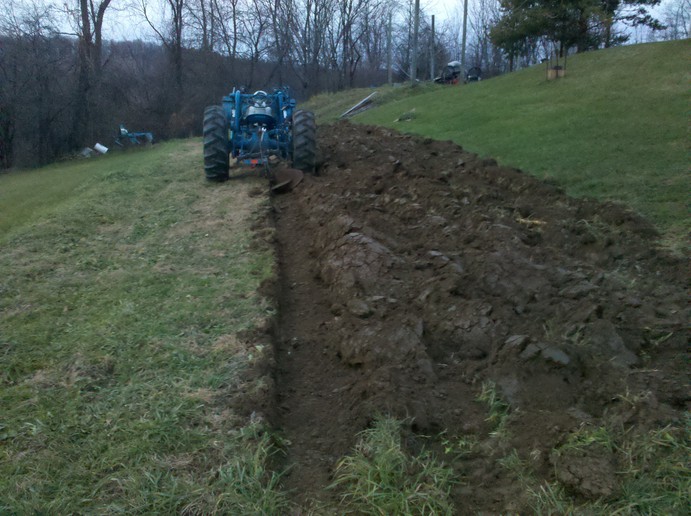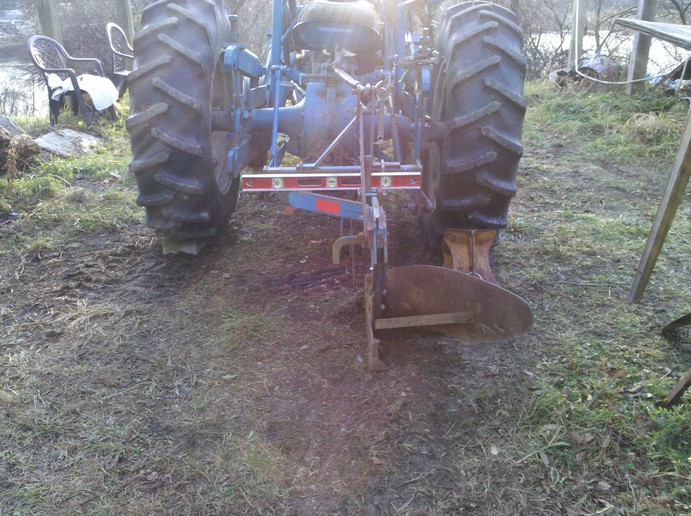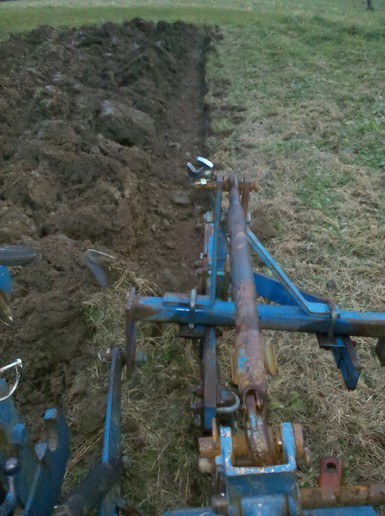I can't claim to be an expert, but it sure seems the advice given has covered everything, from layout, to adjusting the plow level in the furrow and what happens when the results are not desirable from any or all of what was said.
I've had the experience of breaking ground that was idle for as long as that, cleared with a rotary cutter, a few small stumps and heavily root bound soil, which here is a loamy top soil, some round rock, some clay/gravel etc.
In my experience with the conditions described and watching the farmer plow since I was a kid, its mostly the correct adjustment of the plow and the plow wear parts being within tolerance, not worn out. This seems to make the difference. I think its ideal to have the coulters on and set at a depth of 1"-2" max. I learned a lot by fooling with 3 different plows one a Ferguson AO 14" , a Ford 110 1-16" and a Ford 101 2-16"'s. All 3 had appreciable wear, the Ferguson was a basket case, but I did get it to work with decent results, the 110, eventually gave the best results and pulled so easily, all I had to do was level it with one wheel chocked up about 8" or so, I did not have to adjust the width of cut or how it trailed, seemed like that was right on. I enjoyed the heck out of using it, and the results were excellent, compared to earlier attempts. Now I need to master that 101, which has new wear parts, except moldboards, only dilemma is thick root bound sod in deep top soil, I did finally see some good results, after I got away from that deep top soil, it wanted to go a little too deep and would not completely flip the sod, stand on end or just a little over, but when I got in an area that I had worked before, still 1 year of sod or weeds, mostly grasses, not as deep top soil, it performed almost perfect, results were good. I'm using an old tractor, draft control does not seem to be working on it, lot of variables to consider, the goal was to get the top completely under to get a good kill off.
The only thing I can suggest is to test it out until you get desirable results, vs forging ahead and doing a less than desirable job, you do want to get this part of the tillage done right.
Most farmers here would plant corn if the ground was idle for a long time and I have seen the results of one area that I recall in thick sod since the early 80's. He plowed it up with an IH 5 bottom, then the disc, we planted corn in it and for some reason the fertilizer was not dropping, that corn was really nice, tall, lush green and produced nicely, just like the advice below, we had oats right next to it so I got a good look mid summer, for some reason no one plated that section for years, I had the job of trimming and pushing trees back in there ahead of the plow.
The photos show what I did to level the plow and the results, which I think were good, this garden plot was in sod, the plow left nothing exposed, clean furrow etc.




